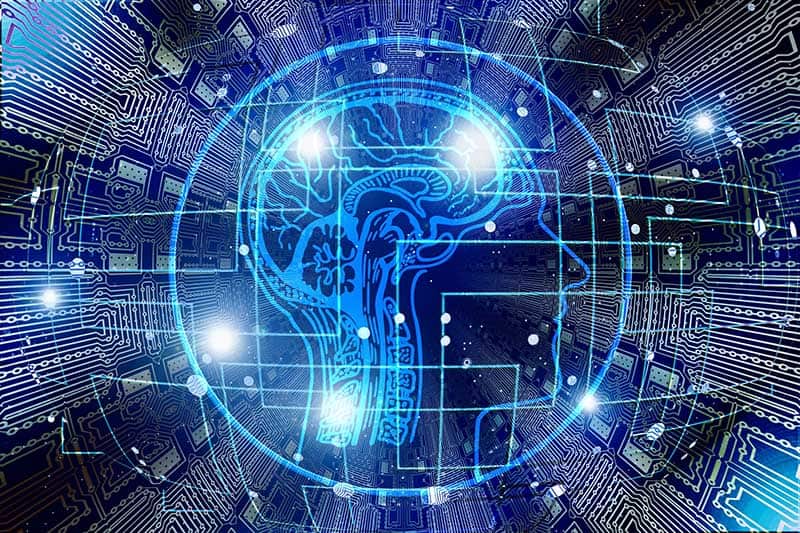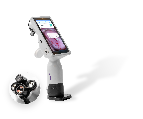AI is touted as the latest revolution in healthcare with applications of AI being developed to offer solutions in fields as diverse as radiology and skin cancer detection. Harvard Business Review reports that “AI could yield $5 billion in annual savings by doing a preliminary diagnosis before a patient enters the emergency department.”
But leaving the hype aside, there are barriers to applying AI in healthcare that still remain to be overcome. MobileODT Chief Technology Officer, David Levitz, PhD, explores the issues.
AI must be understood as part of a larger picture in the healthcare world. There are two interrelated issues that AI has the potential to solve in healthcare; the need for expert interpretation and the need for quality assurance.

Expert interpretation
Healthcare relies on expert opinion to make clinical decisions, but this expertise is the result of huge human investment in terms of time and effort receiving the necessary training. For many conditions, the number of experts with the necessary training to make medical decisions are limited in number. AI has a significant potential impact in healthcare augmenting the decision-making process by reducing the burden on expert interpretation for the easier decisions, allowing them to focus on more difficult cases.
Through using machine learning algorithms to detect and identify pathology, human resources are freed to focus on patient care and treatment. Here a clear distinction is made between detecting and diagnosing pathology. While AI may be trained to detect specific medical phenomena, it still remains for human experts to provide the final diagnosis and select a course of treatment.
Many of the companies that have received significant interest from investors are using AI to interpret images. Viz.ai, that analyses CT scans and Zebra Medical Vision, which utilizes AI to guide radiologists are two notable examples. These innovations have the capacity to change the clinical decision-making process.
Quality Assurance
One of the hardest things to guarantee in healthcare is quality assurance. We all want for all patients to receive perfect care all the time. Healthcare will never be automated like a factory line. However, similar AI applications made in the healthcare sphere can create a revolutionary level of quality assurance. In recent years, manufacturing has increasingly turned to AI to create quality assurance for their processes. Foreseeably, AI will have a significant role in ensuring that users follow guidelines correctly. The potential for human error in healthcare is great, especially when resources are stretched. Technological solutions have the capacity to aid clinicians in their duties, reducing the margin of error.
Just as the in-camera face recognition capacity in cellphone cameras regulates image quality by automatically locating and focusing on any faces in the image, so AI could be applied to medical procedures as an added level of assurance that they are being carried out correctly. This could have a significant impact on the education of new users in a particular procedure. Expert oversight can ensure the technology works as intended, and thereby facilitate faster adoption and help to increase the pool of available clinicians.
Learn more about remote quality assurance in cervical cancer screening >
When AI algorithms work in tandem
One of the biggest anticipated issues in developing many AI applications is in fact data quality. Any AI algorithm is only as reliable as the data being presented for analysis. Ensuring quality input is therefore essential.
This is where interacting forms of AI have the potential to move the field forward. In the case of AI that provides image analysis, an initial AI algorithm that provides external guidance at the time of image/data collection can be utilized to ensure that the secondary analytic stage of AI has the optimum data to be working with. Essentially, AI needs its own AI to improve data quality.
AI needs its own AI to improve data quality
In terms of developing the necessary technology to apply such a dual AI system, it will be necessary for AI to be embedded into the devices used to both capture and analyze images. Understanding how providers use technology is essential. This will see data scientists partnering with hardware developers to create the next generation in medical devices.
MobileODT is currently developing the EVA System to incorporate the AVE algorithm. Co-developed by the National Cancer Institute and the National Library of Medicine, the AVE algorithm can detect cancerous or precancerous lesions based on a single image of the cervix. As a digitally connected mobile colposcope, the EVA System is well positioned to offer a clinical application for the AVE as it can offer both imaging and analysis within the same device.
About the author:
David Levitz, PhD, MobileODT CSO and co-founder
David Levitz, PhD, is the founder and Chief Science Officer of MobileODT. Dr. Levitz also chairs the “Optics and Biophotonics in Low Resource Settings” conference at SPIE’s annual Photonics West meetings. Dr. Levitz holds a Bachelor’s degree in biomedical engineering/optics from the University of Rochester (Rochester, NY, USA.) He performed post-graduate work at Risø National Laboratory (Roskilde, Denmark), and Lund University (Lund, Sweden) and received his PhD from Oregon Health & Science University (OHSU.) Dr. Levitz was awarded a Whitaker scholarship for a postdoctoral fellowship in Israel.
Photocredit Pixabay https://pixabay.com/en/artificial-intelligence-brain-think-3382507/







